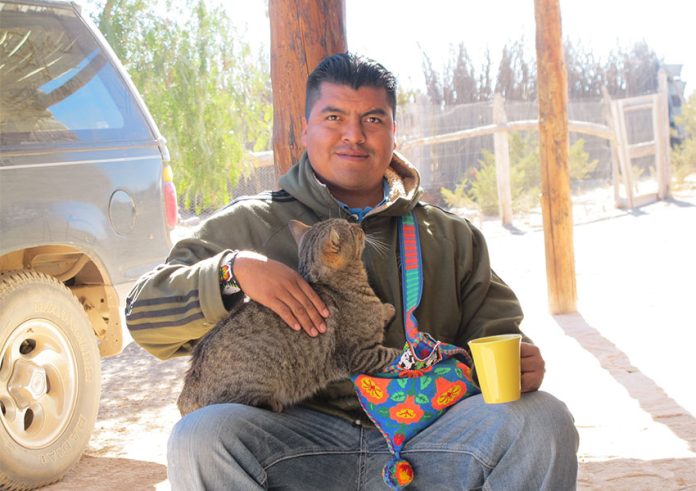This past weekend was an intense and frightening one for many here in Western Mexico — at least among the people who care about the land and Indigenous people: high-profile Wixárika land defender and attorney Santos de la Cruz Carrillo had disappeared on Friday along with his wife and two children, including a three-month-old baby.
They had been taking their pickup truck to a mechanic in a nearby town on the rugged backroads of the Sierra Madre Occidental, near Santos’ community of Bancos de Calitique, Durango, close to the state line with Nayarit. When no one had hear from him in 24 hours and he didn’t answer his phone, his companions reported him missing and demanded that the government launch a top-priority investigation to find the family — alive.
The kidnapping’s timing in itself was suspicious because Santos is the leader of a half-century-long battle to restore nearly 11,000 hectares of invaded Wixárika (also known as Huichol) territory. Just last week I saw that the battle had been won in the courts and that Santos was going home to celebrate this landmark victory with his community.
In Bancos de Calitique, Santos was preparing to begin the next steps of this restitution process when he and his family were disappeared last weekend.
I use the transitive verb form here intentionally, as did other local media, because they didn’t simply disappear. They were taken.
Thanks to his community’s swift and unrelenting efforts and intelligence work on the part of the Nayarit prosecutor’s office, they were found alive and unharmed a couple of days later.
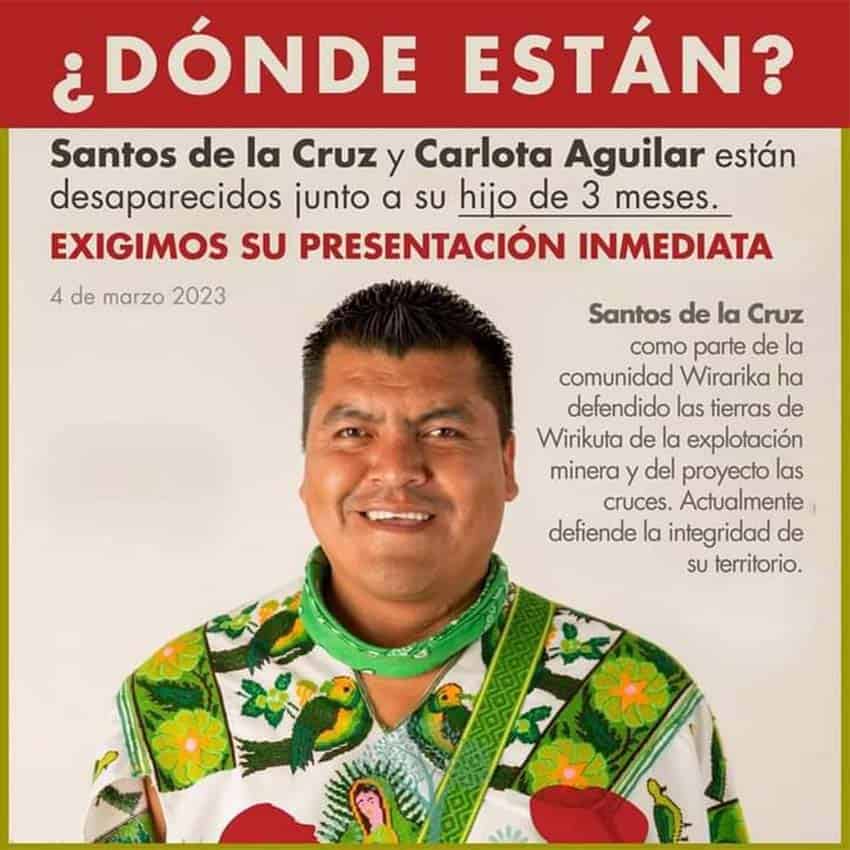
This kidnapping came at a time when Mexico has been named the deadliest place in the world for land defense activists, particularly Indigenous people protecting their ancestral territories, according to the nonprofit Global Witness, which says that 54 environmental and land defenders were killed in Mexico in 2021.
And the problem goes far beyond Mexico, with violence against Indigenous land defenders prevailing throughout the Americas — including the U.S. and Canada. Indigenous peoples, who comprise around 5% of the world’s population, protect an estimated 80% of the planet’s biodiversity. Now, extractive industries are coming full force after these Indigenous lands, seeking to exploit their resources.
Santos’ disappearance hit me hard because he is the first Wixárika person I ever met when I first arrived here in 2010. I met him in the offices of the Jalisco Association for the Support of Indigenous Peoples (AJAGI), the leading group supporting Indigenous peoples’ struggles to defend and recover their territories here in western Mexico.
I went with the team of AJAGI that year to document that struggle and other territorial defense stories that were happening at that time, and it was such an eye-opening trip that it inspired me to come back and work with them to document and support their struggle to save their most sacred site, Wirikuta, from Canadian mining operations. Santos became the key spokesperson and leader of that struggle.
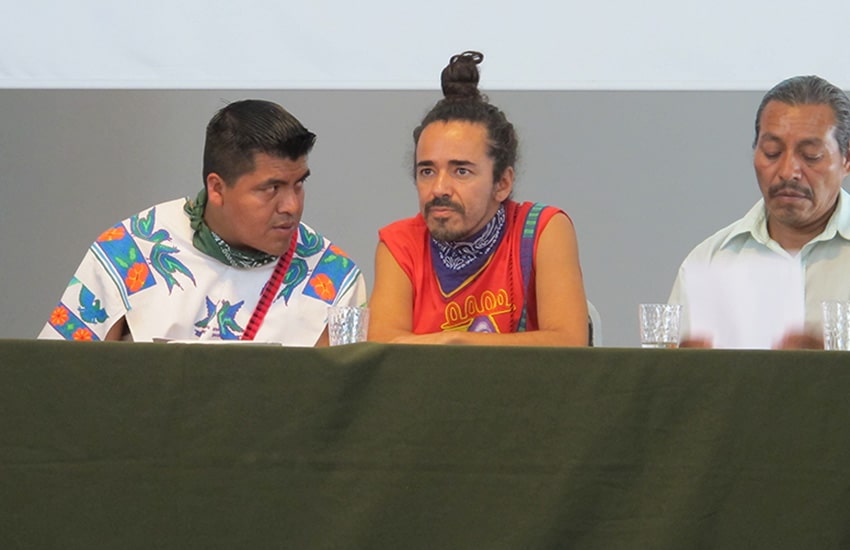
When I saw the announcement that Santos’ long legal fight had at last been won, we connected over social media and I congratulated him. He invited me to his community to come and write about it. I thought of his sweet family, of his spectacularly beautiful community, of his easy laugh and teasing demeanor, of his sharp mind and eloquent discourse in defense of Tatei Yurienaka, the Mother Earth.
What happened to him and his family highlights the danger that land defenders face throughout the region — Mexico is the worst right now, and the Wixárika territories are in particular crisis due to cartel activity. Regardless of the fact that Santos and his family were recovered safely, they remain on the frontlines and are very vulnerable, and are far from the only ones.
The work that Santos and his colleagues are doing is a small attempt to shift the balance toward justice, one that reaches back to the times of colonialism. That reckoning has begun in the U.S. and Canada with the #landback movement, and it has taken a thousand forms, with individual landowners in the U.S. and Canada working with tribes to return portions of their ancestral lands, and with Indigenous people themselves occupying treaty lands that have been stolen.
The legal battles being fought by de la Cruz and his colleagues to recover land that has been invaded by non-Indigenous people over the past 100 years are part of that. In that century, the government has not only turned a blind eye to the practice but actually has encouraged it, granting titles to the land generations ago.
A small amount of progress was made when a presidential decree more than 50 years ago acknowledged the problem; the Wixárika communities have been fighting for restitution in the courts — and winning — ever since. But it has been a battle with violent consequences.
A parallel and similar fight has been waged by the Wixárika communities of San Sebastian and Tuxpan de Bolaños of Jalisco state, who also established the ownership of 11,000 hectares across the state line in Nayarit around the ranching community of Huajimic. Those communities saw their leaders killed in the process.
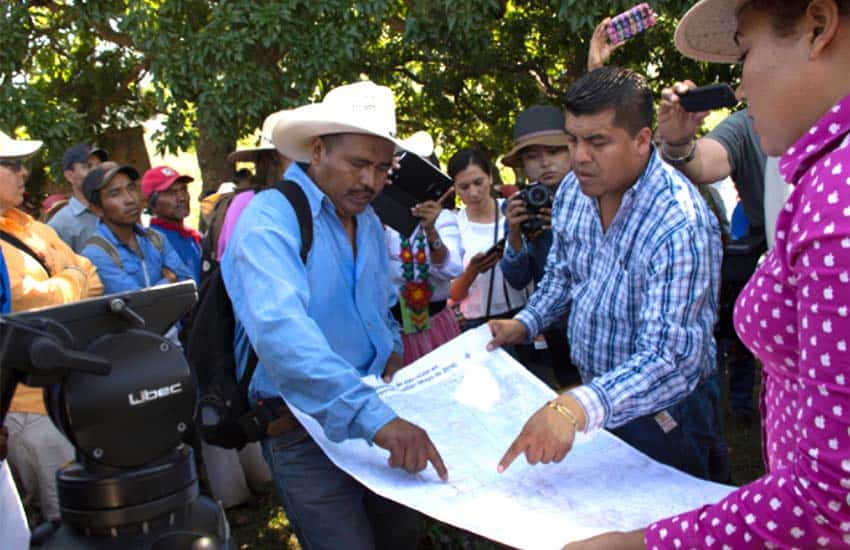
In 2016, I went to San Sebastián to report on that land restitution and was received by Miguel Vázquez, leader of the movement. I stayed the night at Miguel’s home, ate breakfast at his table with his wife and the tiny daughter who adored him.
I traveled with him to the first land parcel that had been returned after the court officials had signed over the rights. It was a 184-hectare ranch, just a tiny fragment of those 11,000 hectares.
Local law enforcement had refused to accompany them to take possession of the land, and the ranchers of the community of Huajimic — the community whose members had generations ago been wrongly granted title to that land by a corrupt government — blocked the entrance road and threatened violence.
So the Indigenous community organized.
More than 1,000 walked together to the land parcel, taking the back route through the mountains. They took turns accompanying the two families as they set up their homestead, and for many weeks afterward until things had settled down, which was when I came to visit.
Five months later, Miguel and his brother Agustín were dead, shot down in broad daylight by cartel members. It wasn’t until last year that the community had the courage to take up the issue again, this time under the leadership of schoolteacher-turned-authority Oscar Hernández, who organized a 1,000-km march to the nation’s capital to demand support from President López Obrador.
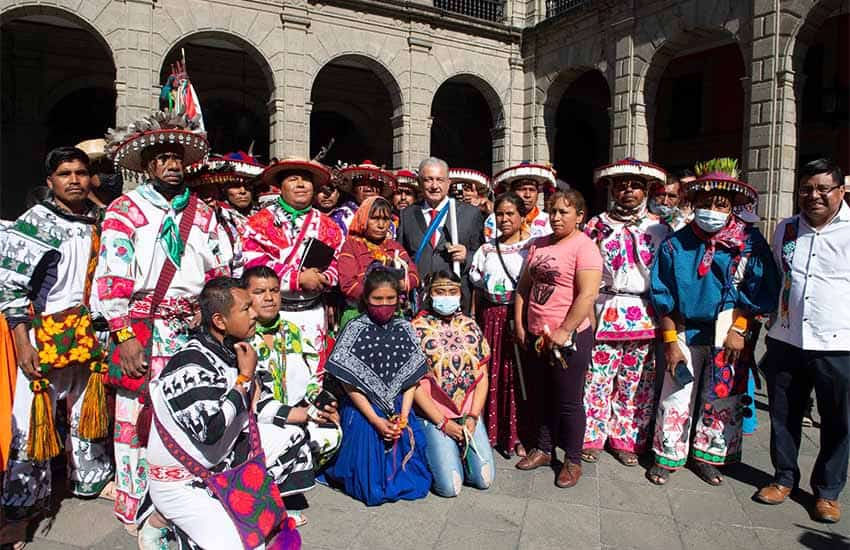
That march led to a visit by López Obrador to the Wixárika territories and a security plan for the region. But security remains highly elusive, as does justice for those who seek restitution of their lands.
Meanwhile, back in Santos’ home territory, after the long legal fight and the victory, the most dangerous part of the work begins. Thankfully, he and his family are OK — for now. But I am painfully aware of his precarious position and that of literally hundreds of Indigenous land defenders.
It is time to stop the impunity and the violence, and time to look within to see what we can do to support Indigenous land defenders like Santos who are putting their lives on the line to defend what remains of the Earth’s wild places. They are doing the work on behalf of all of us.
Tracy L. Barnett is a freelance writer based in Guadalajara. She is the founder of The Esperanza Project, a bilingual magazine covering social change movements in the Americas.
